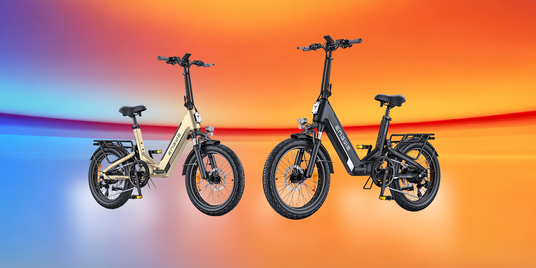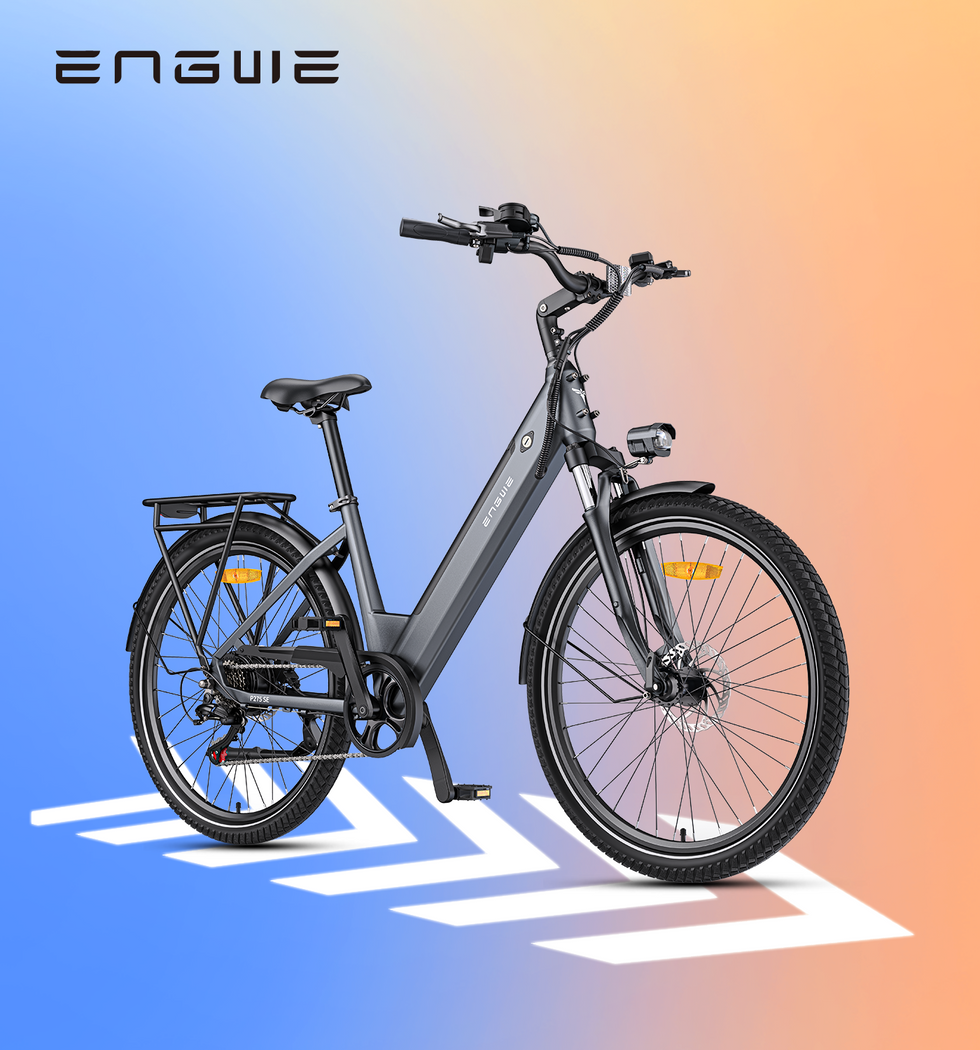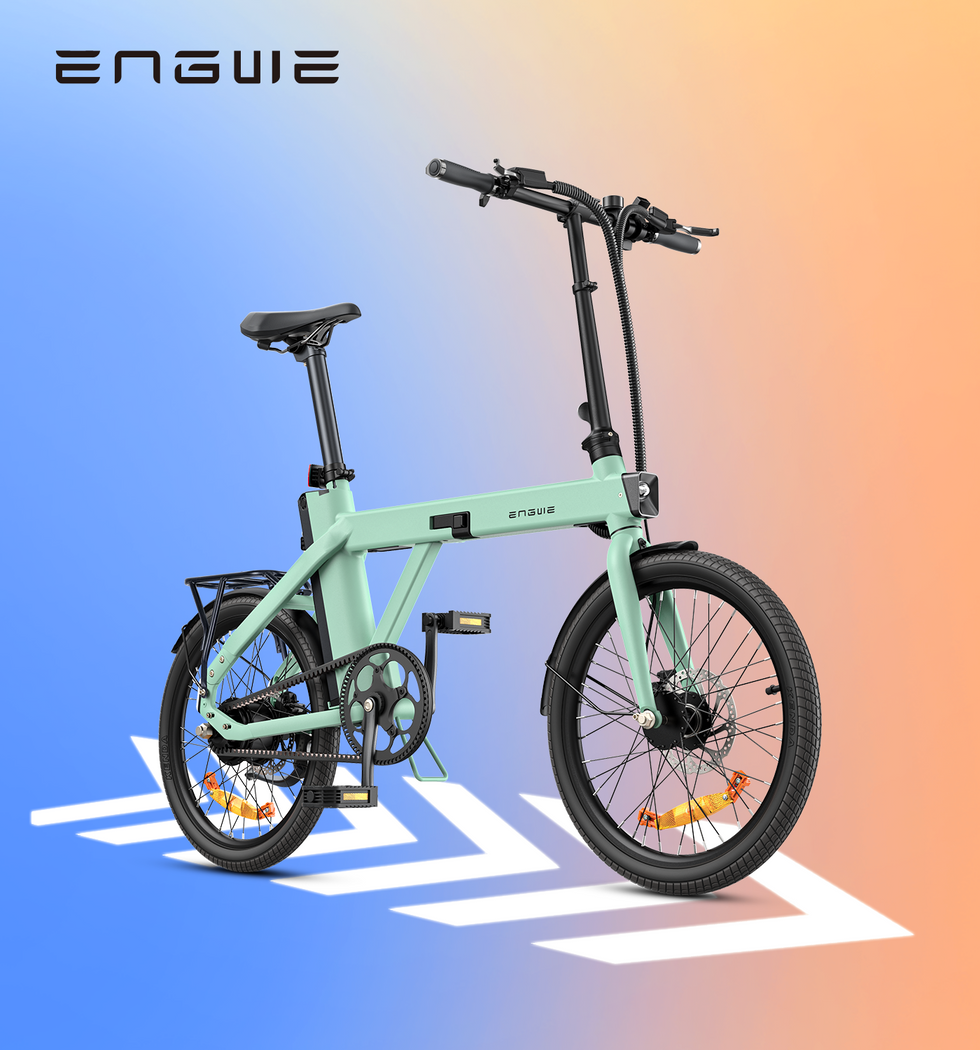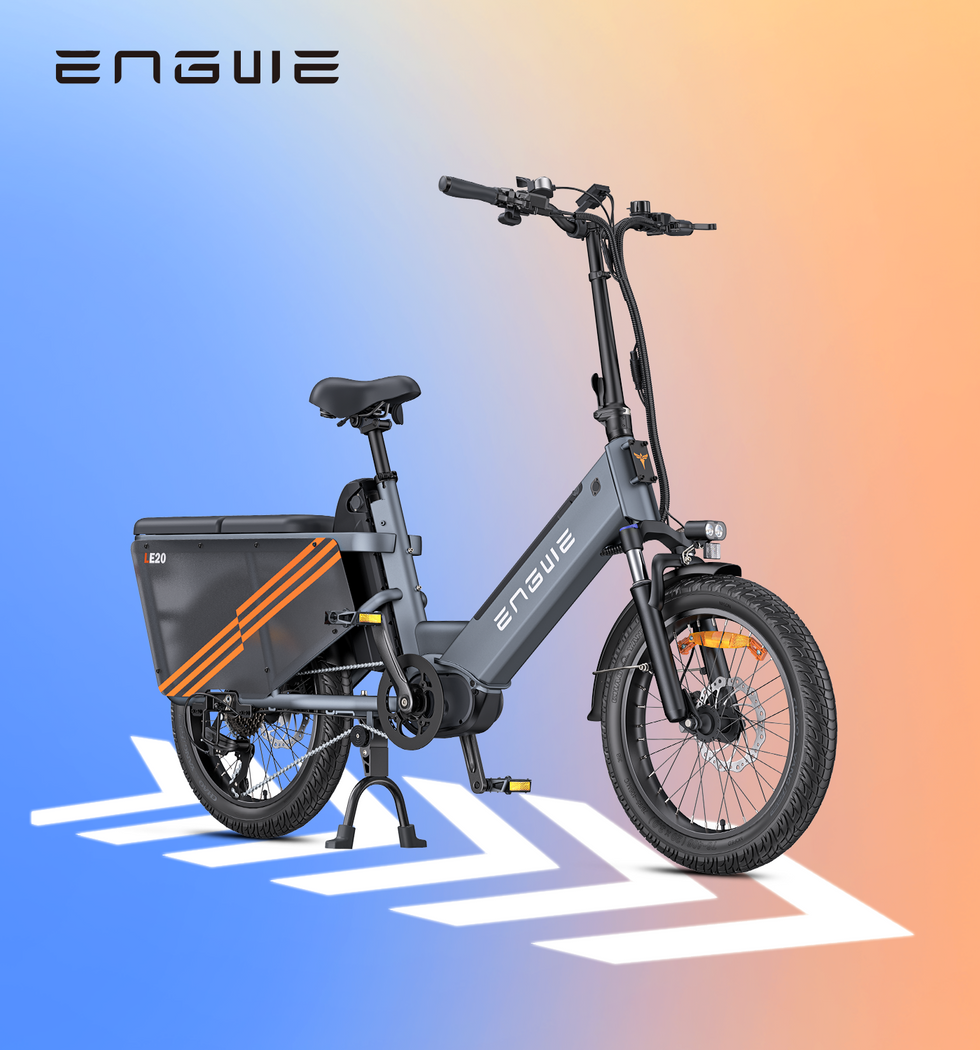Finding the perfect urban and adventure vehicle can often seem like a game of compromise. You want a bike to be healthy and get around, but you’re intimidated by the hills on your commute. You wish you could take on country trails at the weekend, but a chunky mountain bike would be too unwieldy for your city flat. You want something you can throw in the boot for a holiday, but the regular fold-up bikes can only cope with perfectly smooth tarmac. This is the very situation that I was in, and which propelled me on the road to what I now believe to be the ultimate answer: a fat tyre folding electric bike. This is no ordinary bike; it’s a key that unlocks the world, combining practicality with boundless capability. But, before you crack open your billfold, you need to understand what you are truly looking for and how these impressive machines solve the problems you may not even realize you have.
The Secret of the All-Terrain: Fat Tyres Explained
First up is the most obvious one: the tyres. They’re four inches wide, and they could pass for a small motorbike’s tires. On first glance, I thought they would be heavy, slow, and an absolute drag to pedal on tarmac. I couldn’t have been more wrong. The first time I took a ride on one, the feeling wasn’t one of slowness; it was one of smoothness. City roads that I’d considered more or less well-surfaced suddenly sprouted a network of cracks, potholes and uneven drain covers that I’d never noticed. The bike simply coasted over them. This volume of air acts almost like a natural suspension system, soaking up the rough stuff, vibrations and impacts like a regular hybrid or road bike never could.
But their real magic happens when you get off the pavement. A weekend ride on a coastal path that’s a mix of gravel, hard-packed sand and a grassy verge? It would be most bikes’ worst nightmare. On a fat tyre electric bike, it was a blast. The large contact patch grips like nothing else and prevents the front wheel from knifing into a soft track. You’re no longer fighting with the handlebars; you’re skimming along with confidence. This is the fundamental appeal, and versatility is at its root. It's one bike which takes away the "can my bike do this?". You know it, whether it’s a cobbled lane, a muddy bridleway or a leafy park trail in the hours after a downpour. In town, the electric motor neatly compensates for any extra rolling resistance, so they feel just as perky as their skinny-tyred mates.
The Folding Frame: An Actual Space Saver
For anybody living in a flat, a terraced house with no side access, or just wanting to secure their cherished steed away from prying eyes indoors, a non-folding bike is a logistical headache. It is a hall walker, it stains walls, and it is forever in the way. That's where the folding mechanism changes ownership. It’s a refrain I hear a lot: folding bikes are flimsy or hard to use. In actuality, a well-designed model collapses smoothly in three easy steps — typically folding down the handlebars, the frame in half and the pedals in — in under a minute.
The end result is something that fits into a small box that you can put in a closet, slide under an office desk, or in the trunk of a car with space to spare for luggage. This portability fundamentally changes the way you ride. Now it’s not just for journeys from your front door. It turns into a multimodal transportation device. You can pedal to the train station on it, fold it, carry it on the train, then unfold it and ride the rest of the way to the office. For staycations, it’s a game-changer, allowing you to see your holiday destination without negotiating roof racks. The one trade-off that’s truly transparent is weight. With a sturdy frame, battery, motor, and wide wheels, these bikes are heavier than models that are not electric. You don’t carry it far, but hauling it in and out of the car or up a flight of stairs is not a high price for the enormous convenience and security it provides.

The Pulse of Electricity: Energizing Your Trip
It’s the “electric” in electric bike that is the game-changer that turns a sweet little all-purpose bicycle into an absolute life-altering experience. In the UK, this translates to an EAPC (Electrically Assisted Pedal Cycle) with a maximum motor output of 250W and assistance up to 25 km/h (15.5 mph) which only works when you pedal. You don’t have a throttle you can simply twist to zip along effortlessly; it feels much more like riding an ordinary bike, but with a constant, gusting tailwind behind your back at all times. Most models have different stages of PAS. You can opt for a low level for a subtle push, offering a slight assist on the flats while leaving your battery to last, or crank it up to the highest setting to give you an extra electric chunk of climbing ability. And it literally squashes your local geography. That hill you used to try to avoid on your way to work becomes no more of a problem than any other section of the route. This support is massive with fat tyres: the motor means you’re never grinding to a halt whether you’re pulling away from lights or driving through muddy patches. Range anxiety is a frequently cited worry, but modern lithium-ion batteries have made remarkable advances. On a typical battery, you’ll enjoy more than enough range for several days of commuting or a long weekend adventure before you need to plug in and recharge by your bed at night. Charging is as easy as charging your phone.
ENGWE EP-2 Boost: Union of All things
In my quest for the best fat tyre electric folding bike, one make and model continues to make itself known: the ENGWE EP-2 Boost. It's a testament to clever engineering that acknowledges the real world. Its EU-legal 250W brushless motor that works with a comprehensive torque sensor, designed to bring you smooth and natural feeling power when you need it; the power delivery is tuned perfectly to match your pedalling effort for that ultra-smooth ride. And for those times when you're faced with an especially steep hill, the Boost button amplifies the motor's power to a whopping 55 Nm of torque, to give you the extra push you need to make it to the top. The fantastic 48V 13Ah detachable battery provides a range of up to 120 km in the lowest pedal-assist setting, so you can forget range anxiety, unless you are planning some epic trips. Safety and confidence are taken care of via powerful 180mm mechanical disc brakes both front and rear, ensuring strong braking performance in all conditions. Adding to the ride are a reliable Shimano 7-speed transmission, a front suspension fork to smooth the trail and new one-piece wheels that deliver extra strength and control over traditional spoked wheels. ENGWE knows that practicalities are key and the bike comes with all the must-have accessories - such as front and rear mudguards and a robust rear rack for all of your daily needs. When you complete your ride, its frame collapses down to a small size and its battery pops out so it can be easily and securely charged at home or at the office.
| Feature | Specification |
|---|---|
| Motor | 250W Brushless Motor (EU Legal) |
| Torque | 55 Nm (with Boost) |
| Battery | 48V 13Ah Detachable Lithium-ion |
| Max Range | Up to 120 km (lowest pedal-assist) |
| Brakes | 180mm Mechanical Disc Brakes (Front & Rear) |
| Gears | Shimano 7-Speed |
| Suspension | Front Suspension Fork |

Your Ultimate Checklist: Crucial Aspects to Consider
Specs can get out of control when you start to compare models. Concentrate on the features that will affect where and how you ride most days. First, check the brakes. Disc brakes (mechanical or hydraulic) are a must on a bike this heavy and able, providing vastly better stopping power than rim brakes, particularly in the wet. Second, look at the battery. Its capacity, in Ah or Wh, will largely determine how long you can go before recharging. A removable battery is a huge positive for security and charging in general. Third, consider the included accessories. Any bike that offers mudguards, a rear rack and lights as standard will save you a small fortune and a future of hassle. Lastly, notice the specifics of the electric system. A bike with a torque sensor, which measures not how fast you’re pedalling but how hard, should deliver power much more smoothly and responsively than one with a simpler sensor that only checks how fast you’re turning the cranks – a ‘cadence-based’ sensor.
It's no longer a compromise - city and country can both be your playground with this versatile and handsome ride.

Frequently Asked Questions
1. Are these bikes not too difficult to maneuver because of how heavy they are?
Yes, it's also a fact that a fat tyre folding electric bike is heavier than a regular bike, weighing approximately 25 kg to 35 kg. The weight is due to a sturdy frame for navigating rough terrain, the motor, the battery pack and the bigger wheels. But mainly this extra weight only really comes into play when you have to lift the machine. When you’re riding, the assist of the electric motor effectively cancels out the additional weight -- with the bike feeling nimble and manoeuvrable as a result. When it comes to lifting, then, it could be better to imagine it as lifting a heavy suitcase into a car boot and less like lifting a bicycle; it’s a manageable weight for most people for a very short amount of time.
2. How hard are the fat tyres and the electronics on it?
Maintenance is surprisingly straightforward. And the basic mechanicals — chains, gears, brakes — need the same regular cleaning and lubrication as any other bike. The tyres themselves are commonly thicker and tougher, and due to the fact they are run at lower pressures, can suffer from fewer punctures. The electrical parts, such as the motor and battery, are enclosed for weather resistance and do not require frequent upkeep by the user. Your primary duty will be to keep the battery charged and verify that all the connections are clean and secure.
3. Can I ride a fat tyre foldable electric bike in the rain?
Absolutely. These are bikes designed to be all-terrain, all-weather machines. The critical electrical parts are sealed, it is highly waterproof, it is no problem to ride on a rainy day, and there is no need to fear outdoor water while riding. The big tyres also give good grip on wet roads – way better than skinny road tyres, and have a fast, comfy feel. But, like any vehicle on the road, it’s always a good idea to introduce caution when it’s wet out, brake a little earlier and not ride through standing water that’s too deep.
4. What are the rules regarding riding one in the UK?
In the UK, if the electric bike satisfies the EAPC (Electrically Assisted Pedal Cycles) requirements, then said bike is considered by the law as a normal bicycle, and therefore enjoys the same rights and privileges. This means you don’t need a license, you don’t need to register it and you don’t need insurance. The sole requirements are that the motor is at most rated for 250 watts of power, and that electric assistance ceases when the bike reaches 25 km/h (15.5 mph). The motor is pedal-assist only; there is no ‘twist-and-go’ throttle that will help you when you embark on a steep climb or when you are entirely out of legs. Under law, anyone aged 14 or older can ride one on roads as well as cycle paths.
5. So how do you protect such an amazing bike?
Security is a valid concern. The best approach is multi-layered. First is to buy a top-notch, independently-rated bicycle lock, such as a heavy-duty D-lock or a chunky chain lock. Secure the frame of the bicycle to an immovable object at all times. Second, take advantage of the bike’s special features. With the folding design, you can even take the bike inside your house (or your office), which is the safest place for the bike to be. Then there's the fact that a bike with a removable battery means you can take the most expensive and most important part of the bike with you, so it's less appealing to thieves.



